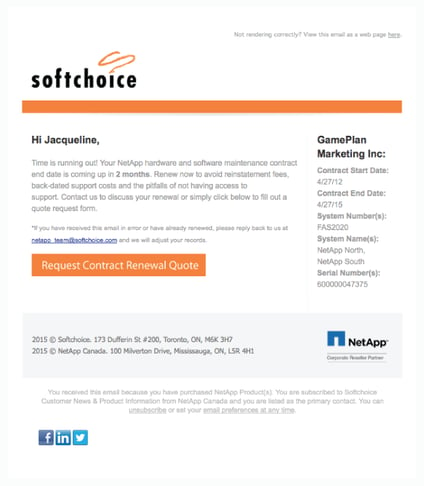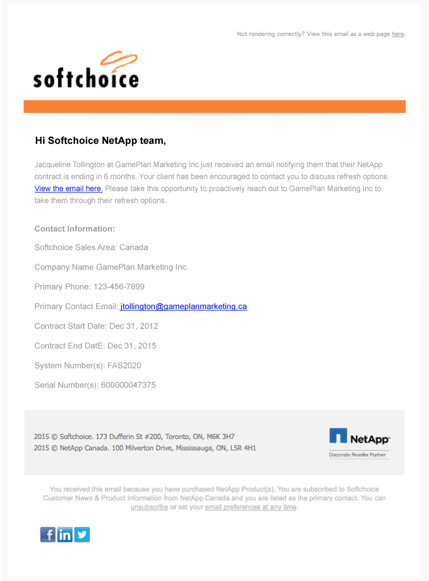
For all businesses, new sources of revenue are important. But it's the loyal, repeat customer that can significantly have an impact on your bottom line. A number of studies point to the business-value of retaining your customers:
- A 5% increase in customer retention can increase business profits by 25%-125% (Bain & Company)
- 80% of your future profits will come from just 20% of your existing customers (Gartner Group)
- A 2% increase in customer retention has the same effect as decreasing costs by 10% (Leading on the Edge of Chaos, Emmet Murphy and Mark Murphy)
Although most companies understand the value of repeat business, and have heard it costs 5 times more to acquire a new customer than it does to generate business from an existing customer, there continues to be a large focus in many companies on attracting new customers.
A recent Forbes Insights Customers for Life report highlights this focus on attracting new customers over customer retention. Their survey of 312 businesses in North America - across a wide rage of industries - identified only 38% are primarily focused on repeat customers for revenue growth, while nearly half (49%) are still focused on new customers.
It’s not that businesses don’t care about customer retention. The Forbes report also identifies in relation to other organizational goals, 94% of survey respondents rate retaining customers as a somewhat high, extremely high or top priority.
How can you increase Customer Retention?
Tech marketers can begin the retention process by implementing a customer nurture program - automated marketing campaigns for existing customers. Leverage your marketing automation system to continually engage with your current customers and create nurture campaigns that:
- Communicate product and service updates
- Share valuable content – such as blogs, videos, white papers
- Invite customers to events or webinars
- Offer incentives
- Remind customers when a customer product, service or warranty contract is about to expire.
Automated IT Renewal Reminders
A fool-proof way for technology vendors to deepen customer relationships is by helping channel partners set up an automated IT contract renewal reminder program. Personalized customer nurturing emails are sent a few months or a couple weeks prior to a customer’s contract expiration date. By setting up automated, personalized emails, not only will your company gain value through increased revenues and enhanced customer relationships, your customers and your sales reps will benefit too.
Automated Customer Emails:

- Receive notification when their contract is coming up for renewal. This reminder is helpful in the event the customer doesn’t remember renewal dates and timelines.
- Easily renew online and make any changes to their existing service quickly and easily
- Have the opportunity to contact your company before the contract renewal date if they have any questions or want to talk about their refresh options
Automated Emails for Sales Team:

- Receive notification each time one of their contacts gets an email renewal reminder
- Receive notification each time one of their contacts shows interest in renewing by either filling out a form or clicking an applicable link
- No longer have to keep track of the individual contract end dates for each of their customers
- Get support reaching sales targets. Sales can confidently follow up with customers at the most opportune time to talk about IT refresh options.
- Improve relationships with the customer by taking advantage of the auto renewal touch point to reach out to customers who may value direct contact from your company.
What Are the Best Practices for your Automated IT Renewal Reminders?
To make your automated renewal reminders effective and help you enhance your customer’s view of your company, follow these tips:
1. Create an awesome renewal email
Follow automated email marketing best practices. Ensure the sender name is clear and recognizable for recipients and use a subject title that lets the customer know exactly what the email is about! Your content should be clearly laid out and include a link to a renewal page or a clear call-to-action.
And personalize the email to include not only the recipient’s name but also a reference to their use of your product or service if possible. For example, information about the last time they logged into your system or used your service.
2. Contact the customer multiple times
Contact your customer well before the renewal date and more than once, leaving plenty of time to discuss refresh or renewal options. Send the initial email well in advance of the renewal date. This can vary from one to two months or even more depending on the nature of your product or service and the length of the contract.
Time your follow up emails accordingly and be sure to schedule a “Thank you for renewing” email once the renewal has been processed.
3. Consider more than one communication channel
For large renewal contracts, a phone call from your company to discuss renewal options would be appropriate. Other approaches to consider could be a text message for customers who have opted in and relevant information about renewals on your web sites. It may even make sense for your company to discuss renewals in a general way on your social media properties such as Twitter and LinkedIn.
At all stages of the automated renewal and retention process, make it a great experience for your customers by providing all the information they require, anticipating questions in advance and proactively contacting customers. Remember, companies that prioritize the customer experience generate 60% higher profits than their competitors! Ensure all customer touch points offer information that assists the customer in making the renewal decision.
A part of your automated renewal and other nurture campaigns to existing customers, engage with them on a personal level, and be sure to cater content to their existing purchase. For example, provide FAQ blogs to contacts that purchased recently, or upsell by featuring complimentary products to their purchase. Most of all, be human, anticipate customer needs and open up new opportunities for engagement and communication.
GamePlan Marketing is a Full-Service Creative & Digital Agency located in the Oakville, Greater Toronto Area in Canada. We Specialize in Digital Marketing for B2B Technology Companies.
Looking for a technology marketing agency to help with customer retention efforts?


.png?width=252&height=82&name=gameplanmktg_logo_white%20(1).png)

